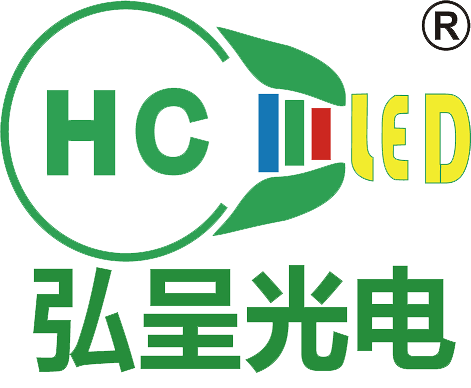Principle of Light Emitting Diodes
1. Briefly describe
shinediodeLED, named after the first letter of "Light Emitting Diode", is a semiconductor electronic component that can convert electrical energy into light energy. Its electrical symbol is shown in Figure (1), where the emitting element represents the LED. The positive (anode) pin is usually represented by A, and the negative (cathode) pin is represented by K. Light emitting diodes, as electronic components, appeared as early as 1962. In the early days, they could only emit low luminosity red light, but later developed other versions of monochromatic light. Today, they can emit light that covers visible light, infrared light, and ultraviolet light, and their luminosity has also increased to a considerable level. At present, light-emitting diodes have been widely used in indoor and outdoor LED lighting, LED displays, traffic signals, automotive lights, backlight sources for TFT LCD displays, lighting fixtures, fiber optic communication, and so on.
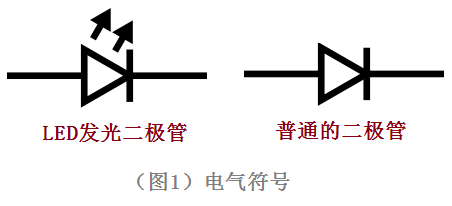
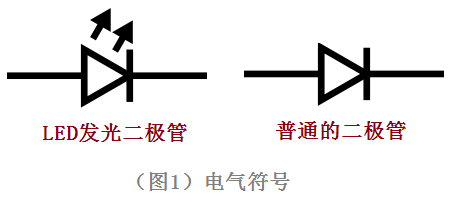
2. Luminous principle
LED, like ordinary diodes, is composed of a PN junction and also has unidirectional conductivity, except that LED can emit light! As shown in Figure (2), its luminescence principle can be described as a combination of N (-: negative) type semiconductors with more electrons (negatively charged) and P (+: positive) type semiconductors with more holes (positively charged). When a forward voltage is applied to the semiconductor, electrons and holes will move and recombine at the junction, generating a large amount of energy during the bonding process, which is released in the form of light. This is the mystery of its luminescence. Compared with previous light sources that first convert electrical energy into heat energy and then into light energy (such as Edison's early invention of incandescent lamps), LEDs can directly convert electrical energy into light energy, so they can efficiently obtain light without wasting light energy.
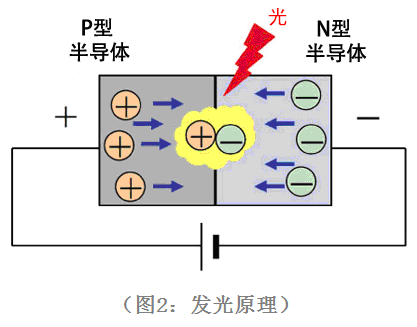
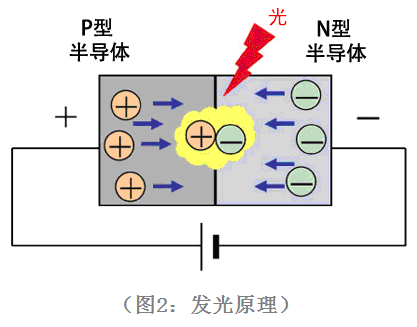
3. Structure of LED
Next, let's take a common LED white light as an example to illustrate the structure of LED. As shown in Figure (3), the LED is mainly composed of the following parts:
Chip (Function: Light source emits light)
Bracket: including substrate, heat dissipation base, pins, etc. (functions: heat dissipation, conductivity)
Gold wire (function: conductive)
Transparent resin (function: protect grains, transparent)
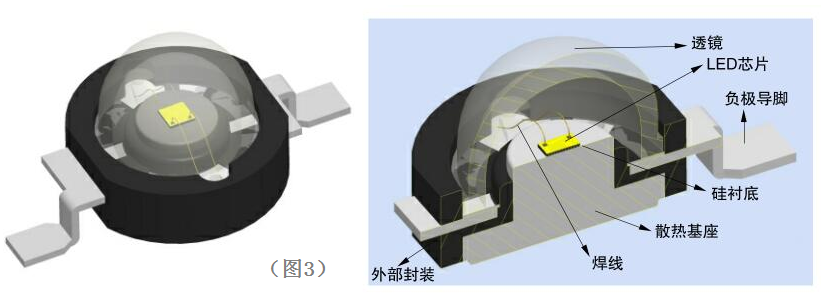
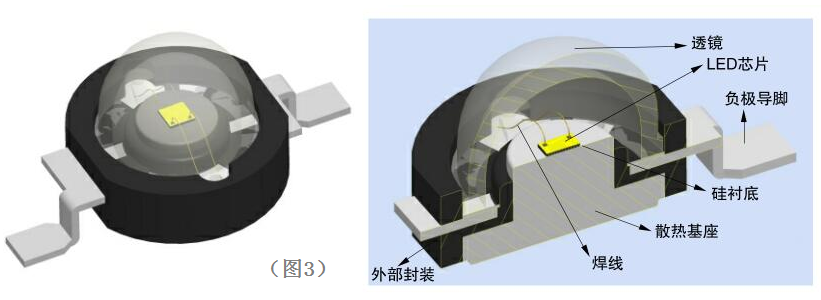
4. Types of LEDs
According to the different packaging, light-emitting surfaces, and characteristics of LEDs, they can be roughly divided into the following types:
4.1 Plug in LED
As shown in Figure (4), it should be pointed out that plug-in LED includes not only the common 2-leg monochrome LED, but also a 3-pin dual color LED, as well as a 4-pin RGB full-color LED.
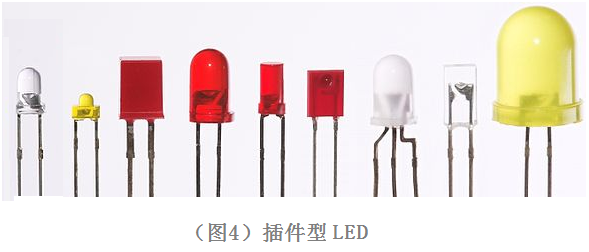
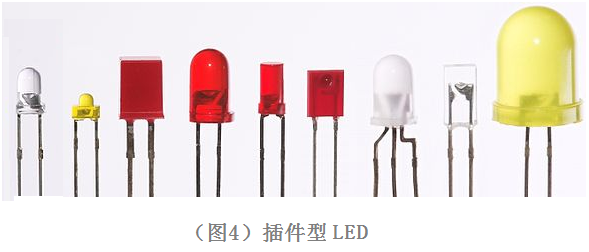
4.2 Surface mounted LED
As shown in Figure (5), SMD LEDs are usually packaged in 0402, 0603, 0805, 1206, and other types, with colors available in monochrome, dual color, and RGB full-color.
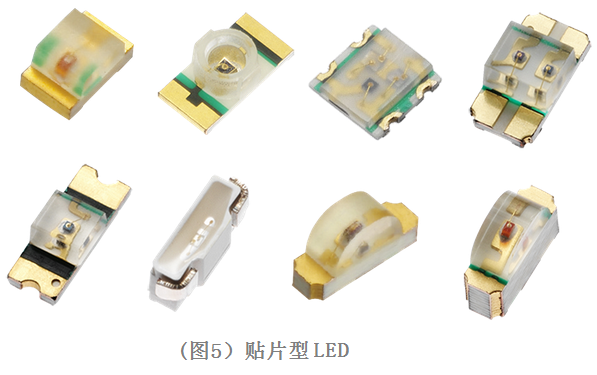
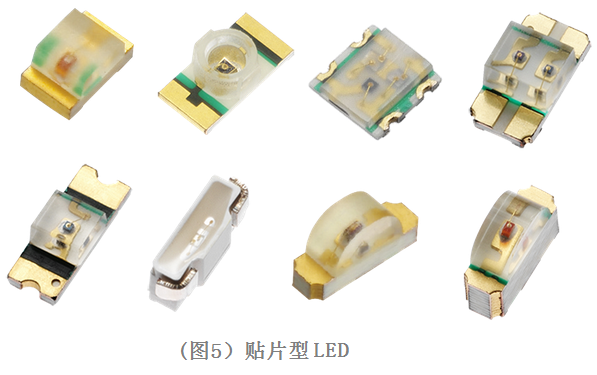
4.3 High power LED
As shown in Figure (6), this type of LED is usually used for lighting purposes, and most of them are white light emitting LEDs with a power of several watts or more.
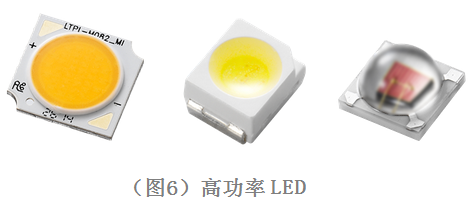

4.4 LED digital tube
As shown in Figure (7), by grouping multiple LEDs into different fields and forming characteristic letters or combinations, it is possible to display 0-9 or meter shaped (English characters can be displayed) or Bar bar segments to indicate progress or proportion.
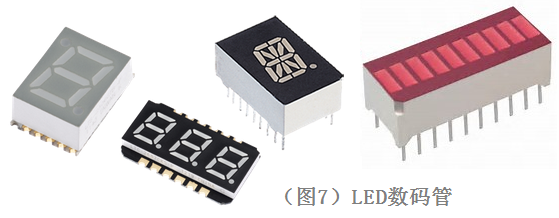
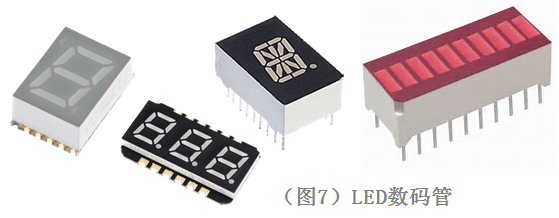
4.5 LED dot matrix screen
As shown in Figure (8) below, by forming a matrix of LEDs, Chinese and English letters can be displayed. For example, the manufacturer's LED display screen is composed of these dot matrix screen modules. By color, it can be monochrome, dual color, or RGB full-color.
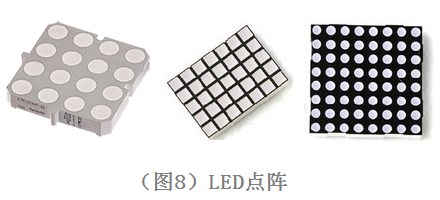
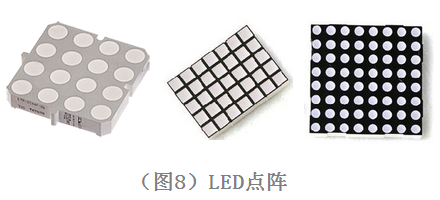
4.6 "Intelligent" LED
As shown in Figure (9), this type of LED not only contains LED wicks, but also has built-in controlsCircuit ICIt can achieve specific functions, such as flashing Flash or bus addressing to control the color of each point, etc. Representative models include WS2812, WS2811, etc.
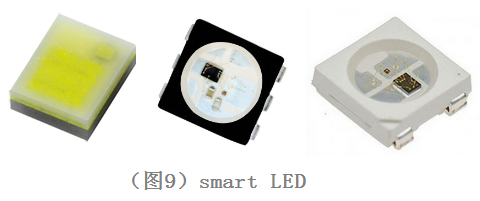
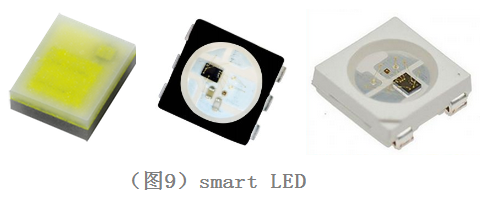
4.7 Special LED
As shown in Figure (10), the reason why this LED is special is that it can emit light that is invisible to the human eye, such as infrared, ultraviolet, and so on. In daily life, the remote control we use is this type of LED light.
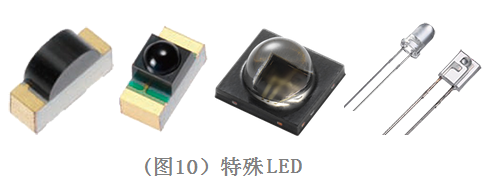

5. Main parameters of LED
5.1 Forward voltage VF
The voltage generated between anode A and cathode K when a forward current flows. The unit is V (volts). When the forward voltage is below a certain value (called the threshold), the current is extremely small and does not emit light. When the voltage exceeds a certain value, the forward current increases rapidly with the voltage and emits light. Beyond the normal operating voltage, the LED may be broken down. Usually, LEDs with different emission colors have different normal forward voltages. For example, red lights usually have a forward voltage between 1.8-2.0V, while blue and white lights have a forward voltage between 2.8-3.3V.
5.2 Forward Current IF
The current generated between anode A and cathode K when a positive current flows. The unit is A (Ampere). Usually, the forward current of LED should be controlled within 20mA. Excessive current can easily cause the junction temperature Tj between P and N of LED to be too high, resulting in LED damage or reduced service life. In addition, like ordinary diodes, LEDs have a significant increase in current when the voltage increases, so LED light-emitting diodes are generally connected in series for protectionresistance.
5.3 Luminous intensity IV
Indicates the brightness observed from a specific direction. The unit cd (candela, corresponding to the smaller unit millicandela, i.e. mcd) emits one lumen of light per unit solid angle, which is called one candela. When comparing light intensity, special attention should be paid to the pointing angle. Light intensity refers to the amount of light emitted within a unit solid angle. As a component of LED packaging, lenses can concentrate light output in a specific direction (using lenses to concentrate light), even if the light output is small, it can still concentrate light, thus increasing the light intensity. It should be noted that the IV value usually needs to specify at what forward current IF the LED is measured.
5.4 Luminous flux Φ v [lm]
It refers to the total amount of light emitted from a light source. The unit is lm (lumens).
5.5 Main wavelength λ D [nm]
LEDs generally use wavelength to represent color. The dominant wavelength is equivalent to the wavelength corresponding to the color seen by the eye, which differs from the peak wavelength of the emission wavelength, measured in nanometers (nm).
The following are the wavelength parameters of various light-emitting color LEDs:
Purple: 400-435nm
Blue: 435-480nm
Blue green: 480-500nm
Green: 500-560nm
■ Yellow green: 560-580nm
■ Yellow: 580-595nm
Orange: 595-610nm
Red: 610-760nm
White is usually represented by the following color coordinates. Or simply express it as warm white, regular white, or cool white.
※ Note: The wavelength range and color markings above may vary slightly depending on the literature.
Interestingly and wonderfully, the inorganic semiconductor materials used in traditional light-emitting diodes are related to the colors they emit, as shown in the following figure:
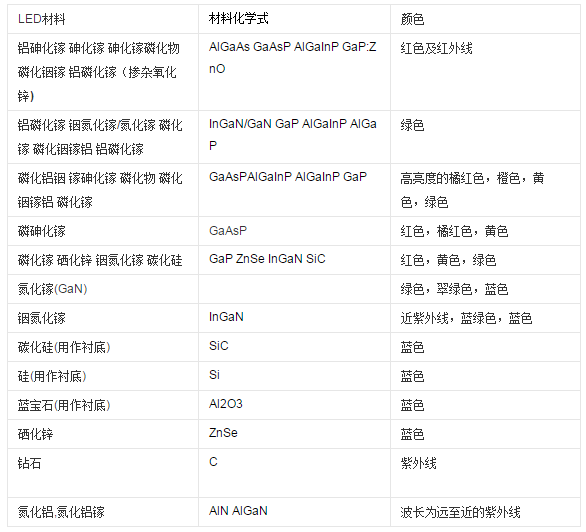
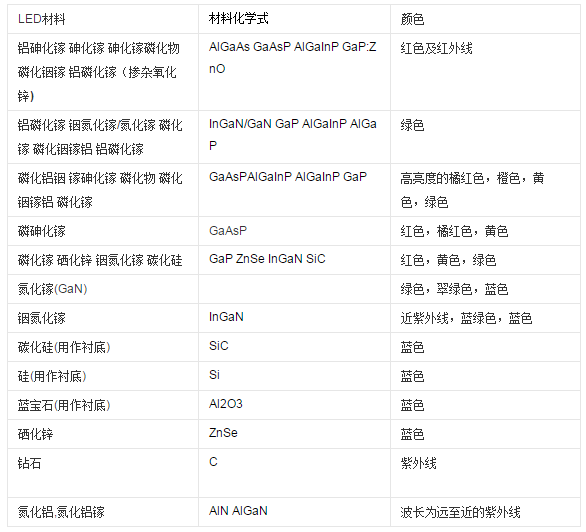
5.5 Chromatic coordinates x, y
It refers to the actual value of LED emission color represented by a two-dimensional orthogonal coordinate system (x and y), as shown in Figure (11) below:

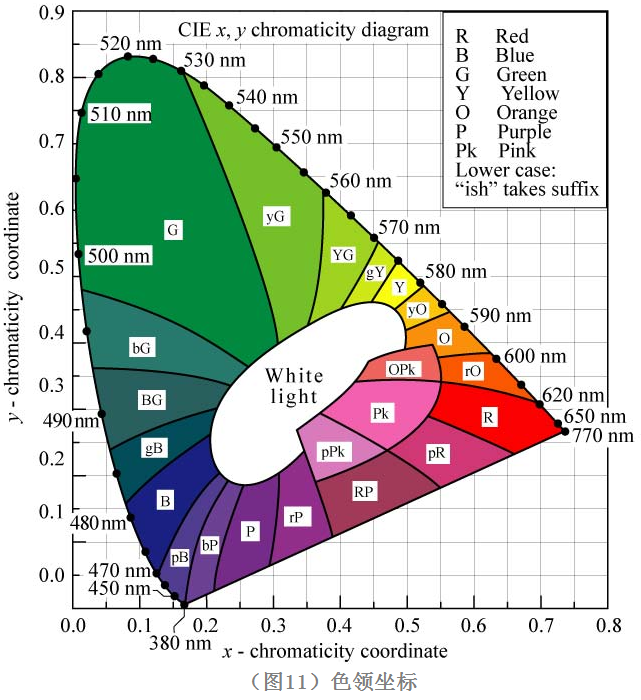
5.6 Color Temperature
Color temperature refers to the temperature of a blackbody when the color of the light emitted by a light source is the same as the color radiated by the blackbody at a certain temperature. The lower the color temperature, the more orange the color tends to be, and the higher the color temperature, the more blue the color tends to be.
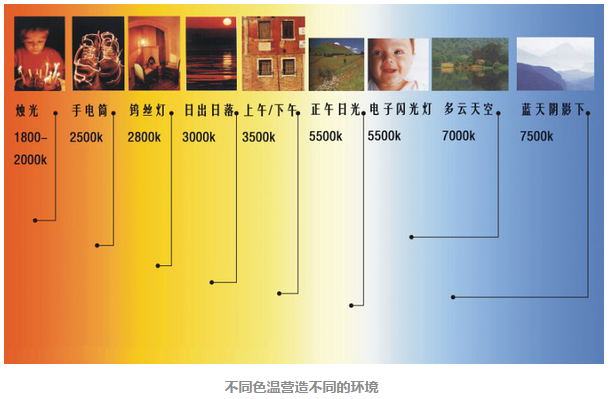
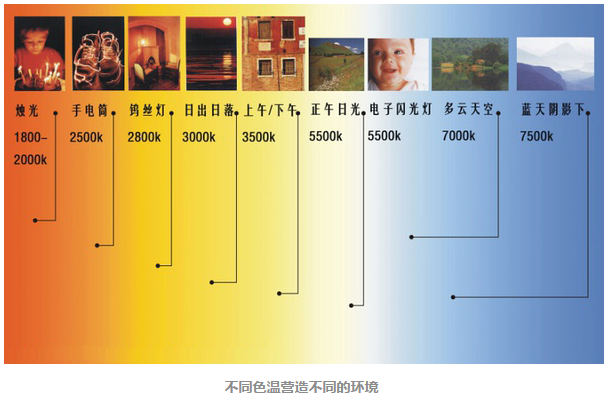
5.7 Luminous viewing angle
In the luminous intensity distribution graph (Figure 12), the angle formed by the luminous intensity being equal to half of the maximum intensity is called the half value angle. The thickness of the chip, the external dimensions of the packaging mold, the depth of the bracket reflection cup, and the insertion depth of the bracket in the mold cavity all have a direct impact on the size of the half value angle. In manufacturing, different sizes of half value angles can be obtained by selecting different materials and packaging sizes according to customer requirements.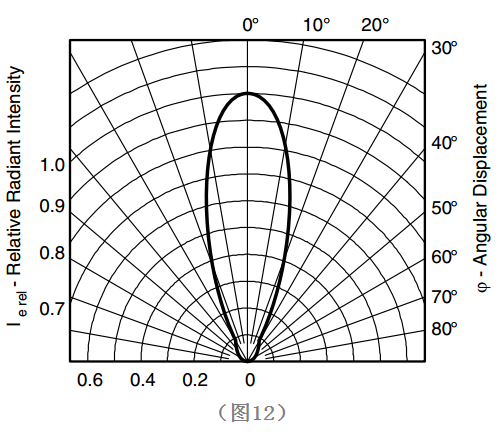
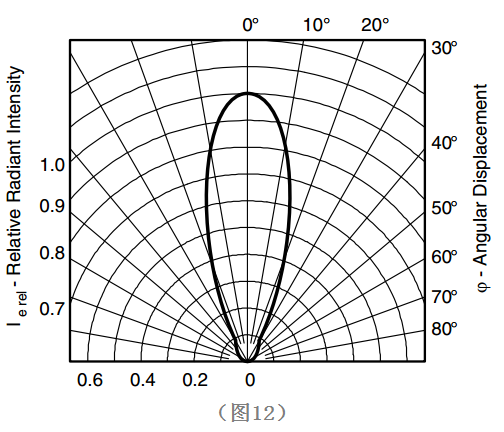
There are three categories based on the angular distribution of luminous intensity:
A high directionality:
Generally, it is a pointed epoxy package or a package with a metal reflective cavity, and no scattering agent is added. The half value angle is 5 ° to 20 ° or less, with high directionality, and can be used as a local illumination light source or combined with a light detector to form an automatic detection system.
B Standard Type:
Usually used as an indicator light, its half value angle is 20 ° to 45 °.
C scattering type:
This is an indicator light with a larger viewing angle, with a half value angle of 45 ° to 90 ° or greater.
5.8 Working temperature
The working environment temperature is an important parameter that affects the operation of diodes, and has a significant impact on parameters such as light intensity and current.
5.9 Service life
People refer to LED light sources as longevity lamps. It is a solid cold light source, encapsulated with epoxy resin, and there are no loose parts inside the lamp body. There are no disadvantages such as easy burning of the filament, thermal deposition, and light decay. Under appropriate current and voltage, the service life can reach 60000 to 100000 hours, which is more than 10 times longer than that of traditional light sources.
6. About White LED
There are various methods for LED to obtain white light. Here, only two representative luminescent methods are introduced.
1) Blue LED+yellow phosphor
The combination of blue LED and its auxiliary color, yellow phosphor, produces white light.
Compared with other methods, this approach has a simple structure and high efficiency, so it has become mainstream at present.


2) Red LED+Green LED+Blue LED
The combination of three primary color LEDs produces white light.
This method is more commonly used for full-color LED display devices than for lighting purposes.


